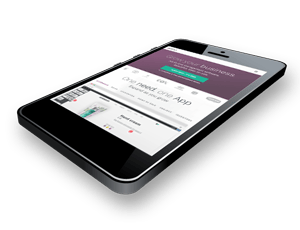Sep 04, 2024
Why ITM Technology Is Good for Many Businesses, Not Just Banks
The interactive teller machine (ITM) as a technology is gaining substantial traction within the banking world. Used by financial institutions large and small — including an estimated 25% of retail banks, according to estimates from branding firm Adrenaline — the ITM is a kind of advanced ATM that came to the rescue during the pandemic for a number of financial institutions (FIs), specifically those that had invested in the technology before prior to the COVID crisis. With many banking facilities forced to close their lobbies to walk-in customers in order to abide by state mandates designed to limit the disease's spread, the closures prevented account holders from accessing cash, checks and other financial needs.
However, thanks to ITMs being equipped with self-service technology and video teller conferencing capabilities — and are frequently installed in drive-up lanes — many FIs were able to get through the pandemic with relatively minimal disruption. Since ITMs can also perform many of the functions of a full-service bank, without the in-person assistance of a teller — it comes as no surprise that 60% plan to deploy at least one ITM within the next three years, Adrenaline says.
But it isn't just financial institutions that can reap value through this technology. Organizations in other industries stand to benefit as well. Yours may be one of them. Before we explore why an ITM helps businesses work better, let's first get a better understanding of how ITMs work in actual practice.
How do ITMs work?

Perhaps the ITM's most distinguishing feature is video conferencing technology, which connects customers with remote live tellers. Since ITMs usually have a built-in camera and microphone, users can interact with the video teller just like they would if they were right there with them.
Aside from this, users operate an ITM just like they would an ATM. Upon initiating a transaction, the ITM connects the customer to a remote teller automatically. The customer then communicates their needs and the teller addresses them remotely, whether those needs involve withdrawing money, cashing checks, bill payment, account transfer and much more. The remote teller can also assist with more involved transactions that typically entail more input from a professional, like applying for a loan, opening a credit card account or technical support. In fact, according to Adrenaline, ITMs can perform up to 75% of transactions that are normally handled by a full-service bank or credit union and 95% of an in-person bank teller. Here is a partial list:
- Issuing money orders
- Order replacement debit cards
- Certificate of deposit (CD) renewal
- Loan advances
- Fund transfer
Are ITMs worth the investment for other businesses?
Because ITMs are so much like ATMs, only capable of doing more, virtually any organization that would own an ATM has a reason to invest in an ITM.
Convenience stores are a classic example. Even though cash use overall has decreased, it's often a payment source of first resort for small dollar purchases, such as those that are common at convenience stores. While there are no recent statistics available detailing what percentage of mom and pop shops or mini-marts have an ATM set up, companies (especially those with more than one location) invest in them because they maximize convenience for the customer and can also serve as an income stream.
What makes ITMs especially attractive for c-store operators is their cost of usage and bang for your buck relative to ATMs. While ITMs tend to be more expensive than a traditional ATM (i.e. cost of the unit, core integration, etc.), The Financial Brand reports that they have practically the same average cost of maintenance over a year's time. And because they are designed to be used at all hours of the day — not just when a business is open — companies can get more use out of the technology, creating the potential for additional revenue.
For example, some advanced ATMs dispense lottery tickets, a popular selling item for convenience stores, which typically make a commission of between 5% and 6% on ticket sales, depending on the state. In 2021, for example, the average convenience store earned more than $2,500 per month in operating income from lottery ticket purchases, according to The Association for Convenience & Fueling (NACS).
Malls, casinos, big-box retailers, grocers, restaurants, entertainment venues, professional sports franchises and hotels are a few other businesses that can get value from ITM infrastructure.
If you have an ATM and are considering switching to an ITM, Ventus can get your network up and running. As a managed network expert, we design, build, host and maintain more ATM and ITM networks than any other provider. We offer cellular WAN for remote ATMs, branch ATMs and ITMs in all business settings. See what makes us No. 1 by contacting us today.